Residencies
Klondike Institute of Art & Culture (KIAC) Residency
September – December 2022 / Dawson City, Yukon
In the fall of 2022 I was an artist in residence at Macaulay House in Dawson City. Projects completed throughout the residency ranged from animations, field recordings, and paintings.
During the residency, I began collaborating with Darcy Tara McDiarmid, one of the other artists in residence. We have continued working together, and have since formed Starlight Sojourn Studio for our collaborative animation projects.
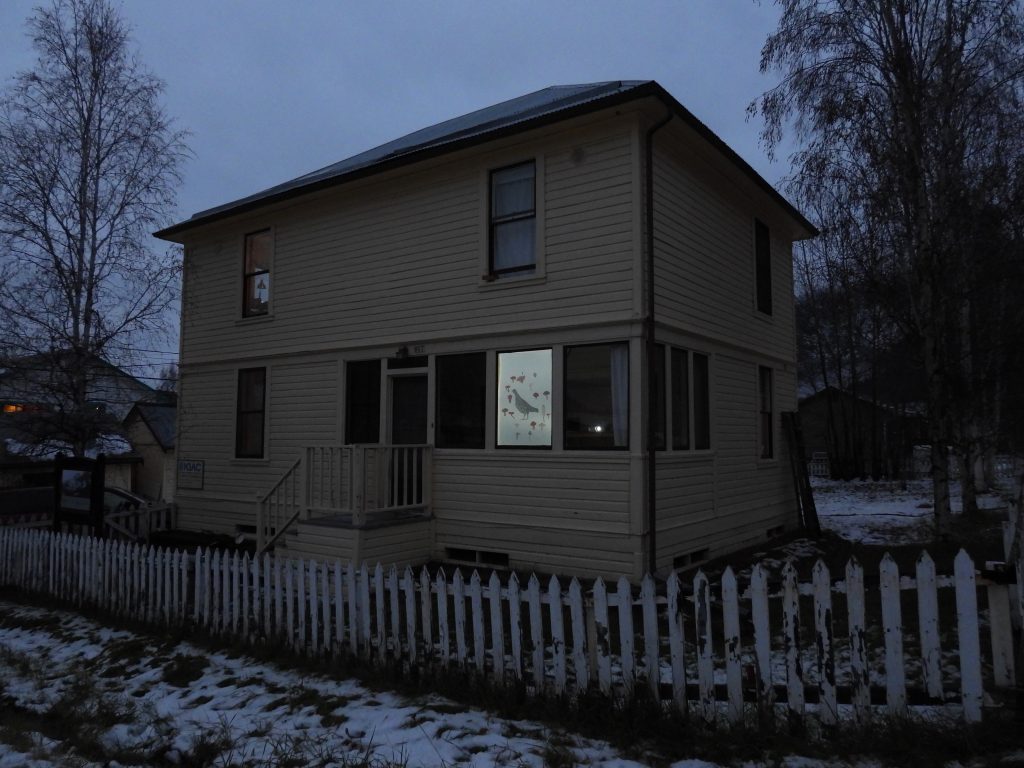
I participated in the Yukon48 Film Challenge, making a short animation A Hot Minute with the Macaulay House Ghost, inspired by the numerous stories of the female ghost that occupies the upper floor of the residency house.
Thank you to the Canada Council for the Arts for their support.

4Elements Living Arts Residency
May – July 2021 / Manitoulin Island, Ontario
In May to July of 2021 I participated in a three month residency at 4elements Living Arts off-grid mobile tiny house/studio on Manitoulin Island, as the first artist in the newly built space. For the residency I worked with two community gardens to create projects specifically for them, as well as writing about my experiences.
Myengenuk Gizhkeking Endaat
For the Myengenuk Gizhkeking Endaat community garden I created two flags, one for each garden plot. The paintings for the flags were inspired by birds that are found on the 300 acre property where the gardens are located. Barn Swallows arrived in May and were nesting in several of the barns, swooping overhead as staff and volunteers worked the garden beds. Sandhill Cranes also migrate to the island in the summer, several pairs return year after year to fields adjacent to the gardens.
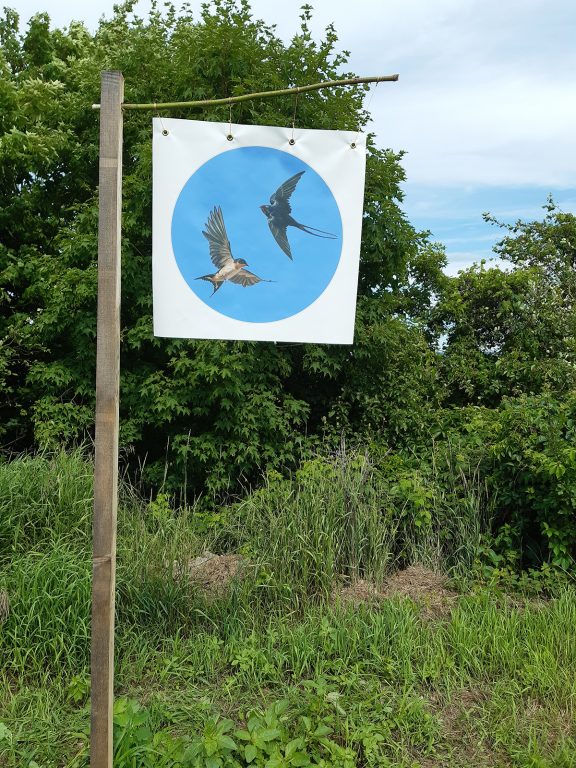
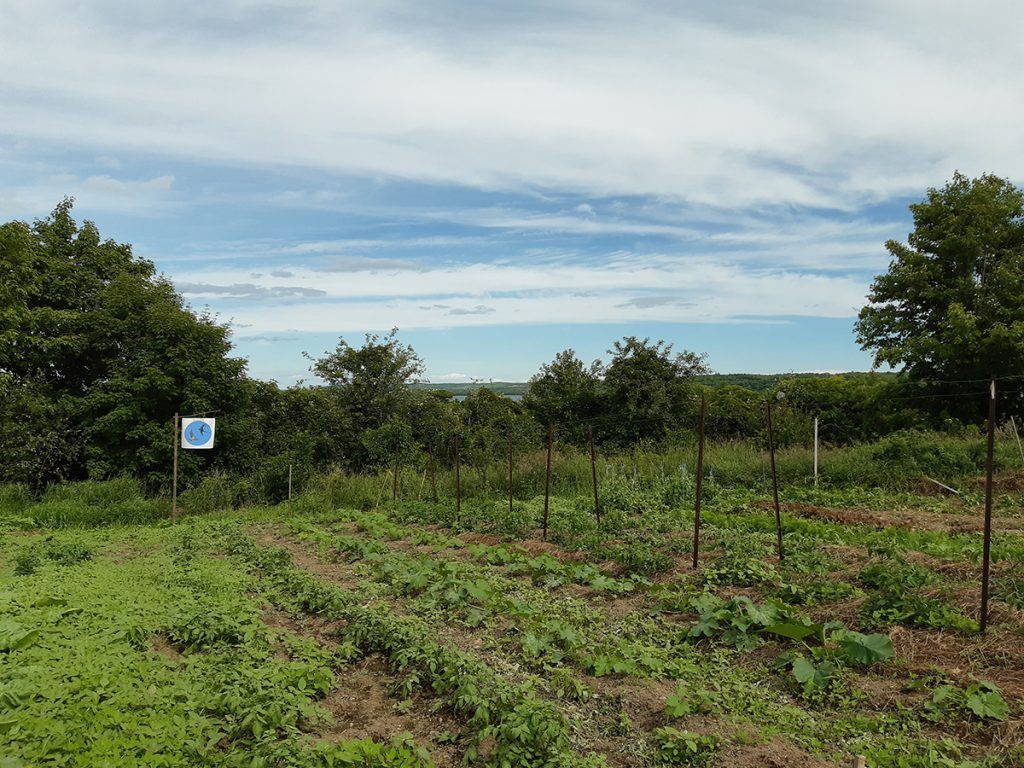

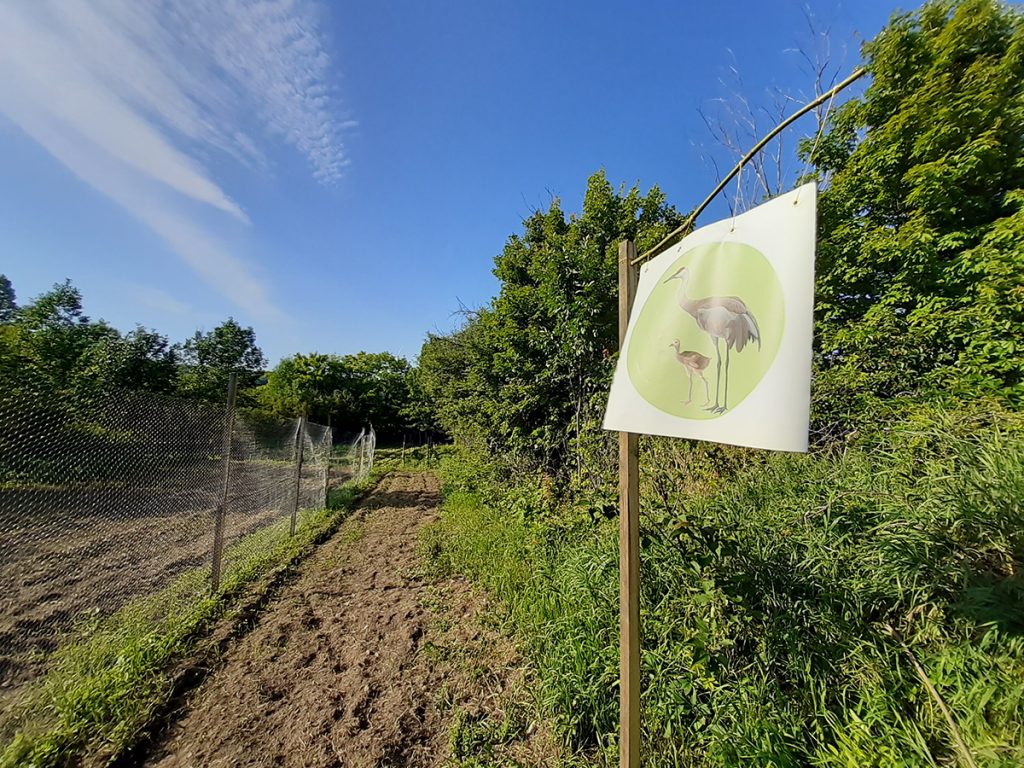
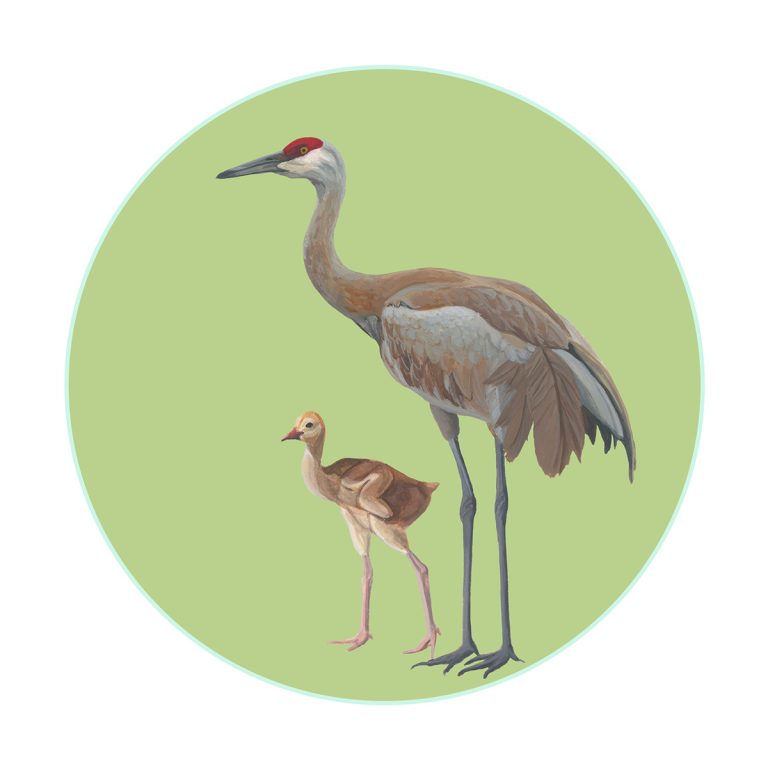
Stories for Paintings – Western Manitoulin Community Garden at Gore Bay
Stories for Paintings was done in collaboration with the Western Manitoulin Community Garden at Gore Bay. A call was put out to their members and volunteers, asking anyone interested to tell me a story, from personal to informational, about farming, gardening, food, or the land. In response to these stories, I created a watercolour inspired by what they told me, to give back to them and complete the circle of the exchange.
Eight people participated. I was honoured by the generosity of their stories and their sharing. One of the common threads that emerged was a deep respect for the land and the joys that come from working with plants and the natural world.


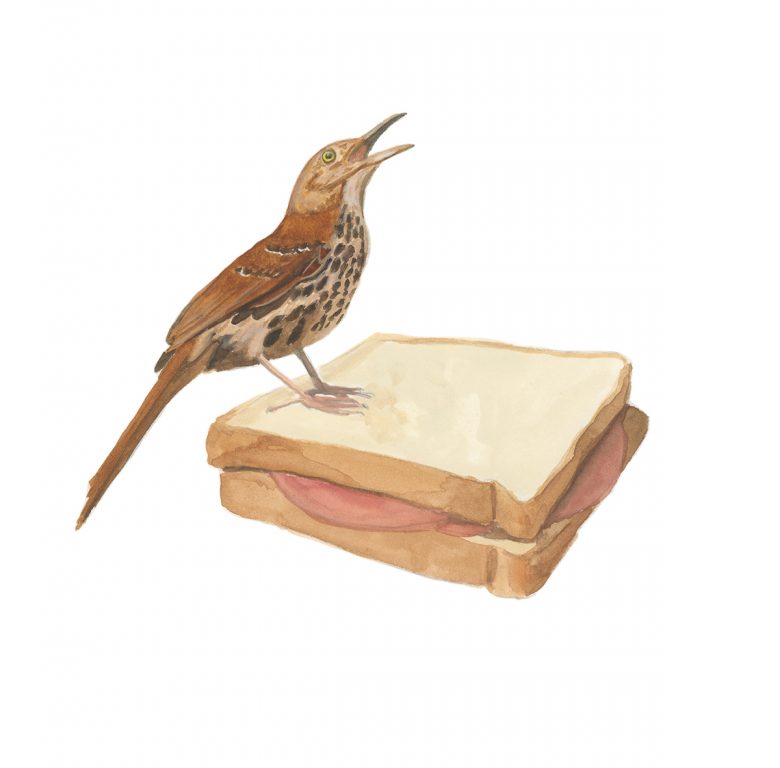


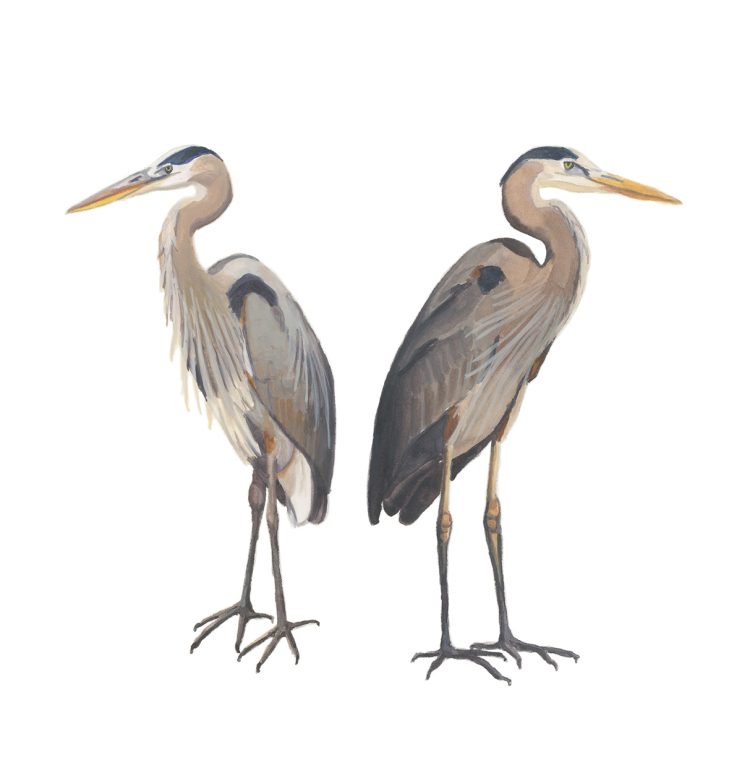

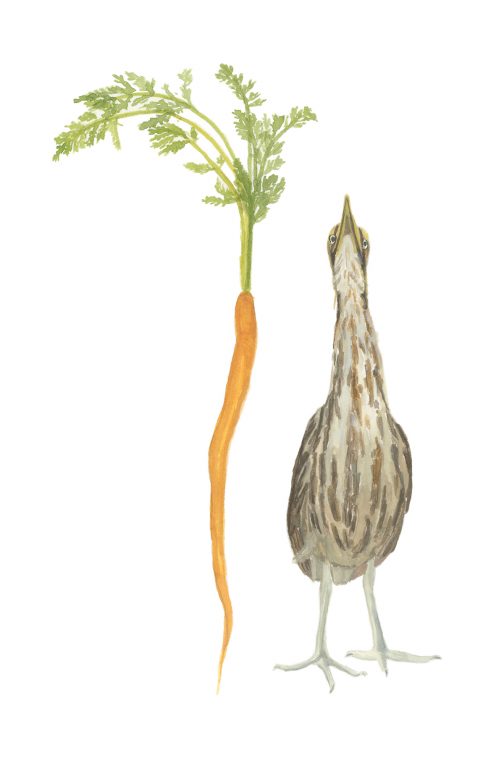
THE GIFT
My experiences as an artist-in-residence in 4elements Living Arts off-grid tiny mobile house and studio parked on Manitoulin Island at Lobo Loco Alpacas/Myengenuk Gizhkeking Endaat.
Written in several stages over the course of the residency.
May – July 2021
I sit outside the tiny house next to the wooden front stairs on my little green fold-out chair, gazing at the landscape around me. The laneway, leading from the main road down to the marsh and the old sand quarries, splits where I am, making a gentle curving “v” before disappearing out of sight in both directions. “Laneway” is perhaps too grand, it is a gravel path, the width of two tire tracks bordered by flowers and tall grasses, with the middle hump also covered in vegetation that scrapes along the bottom of my car as I drive. On either side are small fields leading to a band of trees, mainly aspens and maples.
My morning routine is a slow one. I drink a pot of tea, I read, look at things on my phone, and often I just watch my neighbours going about their daily activities: the birds, the dragonflies, the butterflies. This morning there is the now familiar call of the indigo bunting; he has some new favourite perches on the tops of trees to the right of me. A flock of blue jays passes through: a noisy call and response as they fly above my head and out of sight. Cedar waxwings have been coming to visit recently; they wheel through the treetops in tight formation. I think one gets into an acrobatic fight with a flycatcher; it is hard to tell as their little bird bodies careen and plummet through the air. Tiny warblers dart from tree cover to tree cover across the path, too fast and too hidden in the canopy for any hope of identifying them. Their songs taunt me all day long. I watch the resident phoebe hunting, diving from a low branch to snap up bugs before returning to the same perch. Leaving my chair for a moment, I take a short walk, and while pausing to gaze into the tree line, a raptor with an imminent meal clutched in its talons skims silently overhead before disappearing behind the trees. Returning to my chair to write this, a dragonfly sits on my hand for a brief moment of rest before moving on. It is a good morning, one of many.
This residency has been a gift – a gift of being a visitor to Manitoulin Island/Mnidoo Mnising, but specifically to this piece of land. Watching it change from spring into summer, through May, June and July.
There were no leaves on the trees when I arrived; the land was still in the process of awakening from winter. There was a cold snap. Days were spent with a gas generator noisily chugging away outside to run an oil heater inside. Nights were spent huddled under a warm duvet in long underwear and a winter hat, as the temperature inside and out dropped perilously close to zero.
Early May was the gift of wild leeks. Walking through the hardwood forests I learned to recognize the shape of their leaves, and how to harvest them responsibly – not taking too many from each patch, so that the plants survive and thrive for years to come. Delicious and spicy like garlic, it was my first taste of foraged food other than berries.
Other early season plants tell stories. When yellow marsh marigolds bloom you know it is a good time to look for fiddleheads, and sure enough I find both near a stream in wet marshy soil. Without leaves on the trees, early May is a good time to walk in the woods and explore: to find and follow the wandering creek, to hunt for early spring wildflowers, to see mushrooms and even a sleepy Gray’s tree frog nestled in a mossy stump. From dusk into the deep of the night frogs sing me to sleep from the marsh close by. The combined song of spring peepers, tree frogs, and others, rises and falls in intensity before tapering off into brief moments of silence and starting once again.
May is the time for courting grouse. Throughout the day I hear the booming sound created by the males moving their wings through the air, and spy a courting pair on the path one morning. There are sandhill cranes in the fields around me, tall majestic birds with their strange lurching walk and unmistakable call. A song sparrow serenades me from the maple tree in front of the tiny house, I miss him terribly when he isn’t there. The resident phoebe begins building a new nest next to last year’s in a separate shack where I have my cooking setup, dropping bits of mud and moss on my table. She seems resolved despite my presence, so I know that cooking plans will need to be adjusted once she starts sitting on her eggs. There is a broad-winged hawk who patrols the fields for a couple of weeks, and occasionally an American kestrel alights onto a dead branch for a brief second to survey the ground before flying off. One morning I surprise some ring-necked ducks in the marsh, a wetland usually only populated by red-winged blackbirds and by nesting Canada geese. Most days turkey vultures circle lazily in the sky, riding the currents of hot air.
I don’t see many mammals. A female deer sniffs the air while staring in my direction before stomping her hoof and bounding into the trees making a sharp guttural cry. A chipmunk sometimes comes to investigate when I’m sitting outside in my fold-up camp chair, and I’ve met a skunk twice ambling along the path around the tiny house. Later in the summer I also meet a very large porcupine by the marsh. He is moving towards me using the same path I am on, giving me the impression that he is slowly chasing me before he veers off towards the forest.
As the weather warms up, the trees burst into leaf, the smell of vegetation on a hot day is intoxicating. New plants show their colours: a field is transformed by the white blossoms of wild strawberries, which I hope to be able to sample before I leave. Yellow lady slippers, trilliums, and prairie fire emerge, the latter living up to its namesake. Its bright yellows, oranges and reds do indeed look like a fire spreading across the ground. As early season spring wildflowers fade away, there is an explosion of more and more varieties of plants: the vibrant yellows of bird’s-foot trefoil, yellow sweet clover, and yellow salsify; the pale yellow of sulphur cinquefoil with its five heart shaped petals. There are the deep oranges of devil’s paintbrush, the pale pink of musk mallow, purples of clover, chicory, vetch, and of blue flag irises and swamp milkweed that begin blooming one day by the marsh. And the whites of daisies, yarrow, Queen Anne’s lace and bladder campion, as well many more varieties that I don’t know yet the names of. There is so much abundance and so much to learn.
With warmer weather comes new birds: warblers, great crested flycatchers, indigo buntings, American goldfinches, cedar waxwings, red-eyed vireos. An indigo bunting has become my friend. He has a couple of perches on exposed branches near the tiny house where he will sit and sing for hours; his feathers are deeper and richer shades of blue than the sky behind him. A brown thrasher is also a common visitor, singing his complex song that mimics the calls of the other birds around him. As the summer progresses I see him often, and now with a female counterpart, foraging in the fields and shrubs around the tiny house for insects. A pair of sandhill cranes nest in a small marsh in the field behind me; I inadvertently startle them one day while walking over to explore. Thinking the brown round shape on the water’s edge was a large rock, I was surprised when it promptly took to the air with a startled cry, shortly followed by a second bird who was hidden among the reeds. I no longer venture to this marsh so as not to disturb them further. After several weeks the female crane is no longer on the nest with her partner on guard nearby. On a lucky day I see them wandering the field, a little fuzzy orange head alongside just visible in the tall grass.
June brings with it a variety of dragonflies wheeling through the air in acrobatic circles snapping up bugs. The nightly chorus of frogs dies down, but now when darkness falls, the stars are reflected in the fields around the tiny house as fireflies begin their nightly dance. The monarchs are slowly arriving after their long voyage from the South. The property has ample milkweed plants that will nourish them and their offspring. By late June a new pleasure is to walk to these milkweed patches and look for the distinctive yellow, white, and black striped caterpillars on the leaves and flowers. Other new winged insects that populate the fields include eastern tiger swallowtails with their vibrant yellow wings, and European skippers, small four winged orange butterflies that are abundant around the tiny house and rise up in clouds around me when I walk along the path. One day I follow a hummingbird moth, which looks like its name, in its journey through the flowers. As much as I am not generally a fan of spiders, I become uncomfortably fascinated by goldenrod spiders. These small white spiders with their two red stripes look like crabs, and are almost invisible as they sit atop the white yarrows in perfect camouflage waiting for their next meal.
The phoebe begins sitting on her nest. I move my table outdoors beside my front door so as not to disturb her. A while later, when retrieving something from the shack, I am rewarded with a glimpse of fuzzy heads and yellow beaks poking up from the rim of the nest.
In the evening the sun slants low and yellow making patterns of broad stripes of light in the grass and catching the wings of the dragonflies, making them shine. I can watch the sunset from my bed, the clouds turning deep pinks and oranges before the sky fades to dark blue.
Deep into June the chirping of crickets and grasshoppers has been added to my audio landscape. It has been a dry summer so far. Many varieties of grasses turn yellow and brown, and the scattered and infrequent rainstorms are greeted with joy. My phobic fear of thunderstorms is even slightly mitigated by knowing how much the land needs this water.
By the end of June the phoebe nest is so full that the fledglings, who look perpetually grumpy with their downturned bills, barely fit in the small nest. They soon leave it to sit inside the shack for several days, huddled in a row on an old wire clothes drying rack long abandoned by a previous tenant. One day they use the gap between the wall and roofline to fly off into the woods. One comes to visit me briefly on a rainy morning, landing on the wooden stairs that lead down from the patio door.
It is clearly a good time of year for spotting young birds. Approaching the tiny house after a walk to the marsh, I am startled when a flock of juvenile grouse explode from the undergrowth around me and fly away in all directions. The mother perches on nearby tree branch and stares me down while calling to them as I slowly wander away.
Then the rain finally comes, days of deep soaking rain followed by intense and violent thunderstorms that terrify me. There is so much moisture in the air that the fields around me are shrouded by fog, and moving covers me in beads of sweat.
The property I am a guest on is vast. It contains five different soil types that support a range of ecosystems. It has a marsh, a stream, part of an escarpment, two sand quarries being rehabilitated and reforested, and forests of hardwood and coniferous trees. There are fields left wild and used for haying and for grazing alpacas, many barns and a farmhouse, a community garden, orchards, beehives, the remains of a sugar shack, and more that I haven’t yet seen. I have explored only a small section of this land, but in the course of an evening walk I can pass through completely different environments, ranging from marshland to open fields to dense forests, from sand to meadows to mature cedars covered in moss and surrounded by leafy ferns.
The tiny house and studio is built on a trailer bed. Its footprint is rectangular, and it has an upward sloping roof, which gives it a high ceiling making it feel spacious on the inside. On the outside light ochre vertical siding is topped with dark brown wooden horizontal slats. On one of the long sides of the rectangle there is a big glass patio door, two windows on the opposite side, and on one of the short ends, a second door with a large window that allows for a cross-breeze. Inside it is all wooden surfaces and trim, with a grey vinyl floor, two large folding tables mounted to one wall, storage cupboards, a small kitchen area with counters and a sink fed by a tank underneath the trailer. An interior sliding door on one end leads to a bathroom with a tiny sink, compost toilet, and hooks to hang my clothes. The tiny house is cozy, and when it rains the sound of the drops drumming on the metal roof helps lull me to sleep. I have never felt that there is a lack of space to do the things I want to do.
Due to its small size and many windows and doors, I feel connected to the place around me in a way I don’t normally in a traditional dwelling, and it is one of the things I love about living in the tiny house. From my bed, where I am writing this, I can hear the leaves rustle in the wind, mingling with the stories my bunting friend is telling me. I can smell the rain in the air, and watch the storm clouds move through the sky. I feel less separated from the outside than I usually do in a structure, yet I have all the comforts of being inside and safe and dry, with a space to work, read, write, and to do daily chores.
Off-grid living has been an education and has made me more conscious in my daily decision making. To charge a battery with a portable solar panel, I am aware of how a sunny, cloudy, or rainy day will impact my ability to have power, and I am intentional in my use of devices, especially after sundown. When I use water to drink or to wash, I am aware of how much I am using as it will need to be manually refilled. My fridge is a cooler, I only try and buy what I can eat in a couple of days. I cook on a camp stove and monitor my fuel usage so I don’t run out. There is a compost toilet that requires daily maintenance. I shower outside and on cold days and rainy days often skip it all-together.
I don’t have internet access. For large data needs I drive to town to use WIFI in the library parking lot, where I have become part of a friendly community of non-internet households working on their laptops from their cars. Instead of using streaming services for my entertainment, I am borrowing books, movies, and TV shows from the library. All the things that I took for granted as something I had instant and unlimited access to: power, water, heat, fuel, entertainment, are now all intentional choices, and ones that often involve planning. In listening to an interview that I did for a friend’s podcast, only ten days after I moved into the tiny house, I was surprised to hear myself say how hard it was to adjust. After a month my daily choices have become so normalized that I don’t even realize that I am making them.
I am living here alone, though I don’t feel alone in many ways as I am surrounded by the richness of so many diverse species. But I am sometimes lonely. I spend a lot of time in my own head, and as much as I generally enjoy my own company, it can be challenging to be left with my own thoughts with no distraction and no one to share them with. On some days for my own amusement, I sing back to the bunting, a song I unimaginatively call “the bunting song” that changes with every iteration. I compensate for its relative tunelessness with enthusiasm.
I have chosen to live a wandering lifestyle for a little while, travelling to new places to learn from and about them, to meet new people and briefly become a part of new communities. It is a beautiful adventure, with many rich meetings and connections. But some days it is hard to do this on my own, and I miss the relationships that grow from being in a place for a long time.
As part of my time here as an artist-in-residence, I am working with two community gardens. One such garden is Myengenuk Gizhkeking Endaat, just down the hill from me on the same property. I created an artwork for it, paintings of barn swallows and sandhill cranes that are transformed into vinyl flags, hung from posts at each garden plot.
On Thursdays, I drive down the hill to volunteer at the garden. I am enthusiastically greeted by Richard’s dog Nimkii, tail wagging away in hope of neck rubs, and Charlie the cat, a tabby who befriended Nimkii despite Nimkii’s initial reticence. I join the garden staff and volunteers to help with planting, weeding, and watering. We spend many hours using a tiller and then raking the soil to remove twitch grass, and hurling stones into the surrounding forest. My body, so used to sitting and lying down after a long winter in isolation, thrives with this labour under the hot sun. The beauty of working the land with others, feeling the dirt beneath my fingers, moving unaccustomed muscles, is that it also creates time and space for sharing stories. Our hands are occupied, and as we weed a row or rake a new bed, we talk, about our lives and journeys, about ideas, about small daily things, and this too is one of the beautiful aspects of a community project.
When I arrived in May the gardens were mostly dormant, it is now mid-July and I am happily surprised every week to see the changes that I have helped create. New garden beds are made, seeds sprout into tender shoots and then robust plants, the beginnings of small green tomatoes droop from stalks, the peas and beans reach for the trellis. While I have been enjoying harvesting lettuce, radishes and cucumbers for my table, I will be leaving before many of the vegetables will be ready for consumption, but the work and the beauty of becoming a temporary part of this community is a reward unto itself.
For a second project, perhaps in response to many months of winter isolation, I wanted to create a space for an exchange, a more intimate art piece that has at its core a point of connection between strangers. Working with the Western Manitoulin Community Garden at Gore Bay, I invited members and volunteers to tell me stories about farming, gardening, a relationship to food, the land, or a project they have worked on. In exchange I will create paintings inspired by what they tell me. I spent a week driving to the Western side of the island to meet eight people. I am told stories, from factual to personal; stories of childhood; stories of important life changes and of new paths chosen and fought for. Weaving throughout the accounts is a deep love for and of the land. I am holding these stories now, and finding ways to weave myself and my painting within them. I will create watercolours to gift back to the tellers to bring the project full circle.
As I sit and write this, reflecting on these three months, I realize that perhaps the biggest gift of all has been that of healing. This place and my time here have allowed me to relearn how to sit in stillness and be present. It is a gift that I did not expect and one that I am immeasurably thankful for that I will take with me on the next step of my journey.

I acknowledge the support of the Canada Council for the Arts for this residency.

